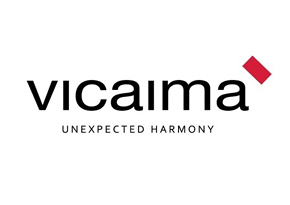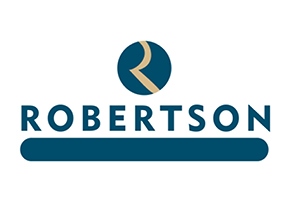- Case Studies
- Open Academy, Norwich, Norfolk
Open Academy, Norwich, Norfolk
Background
Norfolk County Council chose the Sheppard Robson/Ramboll design for its first Academy through a competitive bid process via the Academies Framework. The architect, Sheppard Robson, designed the £20m, 9,000m² development to meet the Academy’s vision of a ‘vibrant, attractive and stimulating learning environment’ that compliments its ‘open’ community.
The Open Academy, which welcomes its first pupils in September 2010, is the largest solid timber panel building in the UK.
The bidder, Kier Eastern, proposed the scheme following previous collaborations with structural engineer Ramboll on cross-laminated (CL) timber schools, beginning with St John Fisher School in Peterborough. The distinguishing features of Kier’s bid were the three months’ saving in construction time and the environmental advantages of massive timber construction.
The brief was for a combined secondary school and sixth form to accommodate 950 pupils and 100 staff. It required more than 50 classrooms as well as laboratories, sports and ancillary facilities.
Timber installation started in June 2009 and took 18 weeks. Kier estimated the overall project programme to be some 14-18 weeks less than a comparable building with a conventional structure.
This Timber Solution explores the benefits and practicalities of using a CL panel system in a large school. It shows that massive timber construction (using CL panels) is sustainable and financially viable.
Building description
The main coliseum-like building is of three storeys and houses classrooms built around a central forum. The forum is a multi-functional social and learning space that includes a lecture theatre.
Sheppard Robson conceived the curved plan of the main building as a series of three concentric bands. The outer band houses the main teaching accommodation with potential for natural daylight and natural ventilation. The second band provides the ancillary spaces such as storerooms and offices, and the inner band is the main circulation route, stacked as a series of open balconies that wrap around the central forum.
Circulation at the Open Academy is a radical departure from traditional educational buildings that have long central corridors and poor levels of natural light. These designs created an uninspiring environment for the building users, produced a claustrophobic atmosphere and cut off any opportunity for interaction and visual connection between spaces, which had a detrimental effect on pupils’ behaviour.
In complete contrast, Sheppard Robson wrapped the accommodation around the central forum, with main circulation routes in a very clear and simple plan. Upon entering the forum, the circulation can be seen rising through the building in the form of tiered balconies that look back down into the forum. The circulation routes link each of the teaching areas directly on each floor. As the design progressed, it became clear that the CL panel system was well suited to this layout.
The site’s aeronautical history and the School’s engineering and environmental specialist status, led the architects to develop building forms that reflected machine parts and propellers.
The ground floor storey is clad in rich reddish coloured bricks, a robust material that continues on the entire sports wing where a different elevation treatment expresses the change in type of activity.
The first and second storeys of the main block are clad in Western red cedar. This lighter material introduces the concept of the floors rotating above the grounded base of the reddish brick level. The terraces, which are cut back, enhance the illusion of movement between storeys like cogs turning on top of each other.
The treatment of elevations breaks down the scale of the building, presenting a stepped façade as opposed to a three-storey wall. The façade is cut away to create terraces off from teaching rooms.
Natural lighting and ventilation would be beneficial for comfort as well as reducing energy bills. The classrooms, positioned in the outer band, all enjoy natural ventilation. Continuing the glazing to the underside of the timber soffit maximises the level of daylight in all teaching spaces.
The forum also enjoys natural lighting via generous rooflights. And a series of light wells wash the back of the theatre rotunda allowing light to penetrate to the deepest point in the floor plan.
The two-storey sports wing, which extends off one end, merges with the main building at the school entrance where a glass box library projects overhead.
Design challenges
The big issues that influenced the structural form and details included:
- cantilevering the stairs
- curved surfaces
- supporting the atrium roof.
The timber feature stairs sit opposite the main entrance in the forum and link the three floors. Rising up through three levels, the stairs give a fantastic overview of the activity in the heart of the school and provide extra standing room for viewing performances in the theatre. The stairs had to appear to be cantilevering from the floors with minimal structural support.
Curved and even double curved surfaces would be made using flat CL panels, applications that architects might not have thought possible.
The atrium roof was a particular challenge with its double curved geometry.
Design details chosen
Cross-laminated timber panel system
The CL panel system generally follows the principles in TRADA’s wood information sheets on cross-laminated timber – WIS 2/3-61: Introduction for specifiers and WIS 2/3-62: Structural principles.
The CL panels are 162mm thick in the walls, 230mm thick in floors and flat roofs, and 78mm thick in the atrium roof.
Cross-laminated timber can be manufactured and delivered in panels up to 2.95m wide and 13.0m long (limited by road transportation restrictions). Manufacture involves gluing layers of softwood planks together, with alternate layers at right angles.
CL panels span two ways and may be cut to virtually any shape required. Panels are used vertically as load bearing walls or laid flat as floor or roof panels. The panels are supplied with pre-cut openings for doors, windows and service runs. The panel contractor normally erects the panels by crane from the delivery lorry without any intermediate storage or processing on site. Panels come with various surface finishes and can be left exposed as a feature.
The structural layout for the main building is an annular arrangement of loadbearing walls that offers considerable flexibility for planning the internal space. The 230mm floor panels span 7.55m with uninterrupted soffits. Glulam downstand beams are used in the few instances where spans exceed 7.55m. Where the perimeter walls step back, glulam beams transfer the upper storey loads into the walls.
Due to its geometry, the structure is inherently stiff and stable. Horizontal wind loading is transferred through diaphragm action of the floor and roof plates. The wall panels resist axial, racking and bending loads – providing lateral stability and transferring horizontal loads to the foundations.
Cantilevered stairs
The feature stairs appear to cantilever and have exposed timber treads underneath and exposed timber walls. Concealed within the timber structure are twin 150x150mm square hollow steel section posts that are welded together to form stiff columns. Cantilevering from these columns are 200x100mm rectangular hollow steel sections that support the CL timber landings. The treads are formed from individual CL blocks, rebated to interlock with each other. Modelled on a stone "cantilevering" staircase, the vertical load on the staircase flights runs from top to bottom with the vertical timber back face designed to resist the torsion of the treads. CL balustrade panels complete the design.
Curved walls
The curved façade called for Ramboll’s structure to include facetted CL panels, provided in 2.4m lengths. Similarly, the roof comprises an array of CL panels. Given the scale of the building, the faceting is barely discernable where panels are exposed.
Atrium roof
The roof comprises 12 glulam arches, the central ones being 18m above the ground floor and spanning 28m. The arches have galvanised steel ties to prevent spreading at their supports. The ties, suspended at third points, have an ultimate tension capacity of 35 tonnes force that is transferred at the ends of the arches by bespoke steel connection plates.
The tied arches are arranged on a vertical arc and tilt at increasing angles towards the ends of the building. The arches support 78mm-thick CL roof panels that act as a rigid horizontal diaphragm, like scales on a shell. The glulam beams and timber panels are designed to be exposed in use and the roof features circular skylights to allow light into the atrium, giving a sense of light and space.
Economy and sustainability
The Open Academy illustrates that massive timber construction can be both a financially viable and sustainable proposal.
In terms of capital expenditure, the CL panel system itself tends to be slightly more expensive than an equivalent concrete or steel structure. However, when taking into account all the consequential savings, the outcome is about cost neutral. The mitigating economies arise from the truncated programme, early achievement of a weathertight envelope, elimination of scaffolding, pre-cut openings that are ready to receive door and window sets without secondary framing, simplified fixings for building services, tighter control of construction tolerances and reduced health and safety risk to the workforce.
The principal environmental benefit of using massive timber is that (when considering the embodied energy per weight of timber, together with the weight of material used per unit area of floor) it has the lowest embodied carbon of any construction material. Using embodied energy figures from the University of Bath’s Inventory of Carbon and Energy (ICE) – which takes account of extraction, manufacture, transportation, operation and disposal – Ramboll has calculated that the carbon footprint of the Open Academy is approximately half that of a comparable steel or concrete structure. Furthermore, because the Open Academy uses some 3,500m3 of timber, Ramboll claims the structure sequestrates (locks away) approximately 3,000t of CO2. When taking account of this carbon storage (provided the timber comes from renewed forests) Ramboll concluded the building has a ‘negative’ carbon footprint, thereby offsetting the building’s operational carbon for a period of 10 years.
Air tightness is also a key factor in the drive to reduce operational carbon because heat escapes through gaps in the building fabric. Building regulations require a minimum air tightness of 10m3/(h.m2) at a pressure differential of 50Pa, but it is possible for the CL panel system to easily achieve less than 5m3/(h.m2) using the normal fixing details.
A local timber merchant recycled the little waste (about two skips) from the erection of the entire structure. And the factory uses its wood waste in a biofuel system.
Enhancing its already impressive environmental credentials, the Open Academy has passive solar design and natural ventilation. Its building fabric performance and energy saving equipment are optimised to reduce the need for heating, cooling and artificial lighting. Daylight-linked lighting controls reduce the amount of electricity required for artificial lighting. Nighttime temperature purging of the building will cool the building overnight.
Also designed for low water consumption, water recycling and rainwater harvesting, as well as having a biofuel boiler and solar panels for heating water, it is no wonder the building is designed to achieved the BREEAM ‘Excellent’ building standard.
Key learning points
In order to take advantage of factory-made openings for M&E services, it is essential to co-ordinate M&E accurately before ordering the panels. Site drilling of holes larger than 100mm diameter can be tricky in CL panels. If in doubt, allow larger and less specific service routes.
The accuracy of panel dimensions and factory-cut openings means door and window sets can be confidently ordered from manufacturer’s drawings without waiting for site measurement.
Agree finishes of exposed timber early.
Conventional construction can require extensive secondary steelwork for fixing cladding, windows, doors and rooflights. CL solutions all but eliminated secondary steelwork.
Take advantage of timber in hybrid forms with steel and concrete. There may be benefits in longer spans and enhanced acoustics.
The CL panel solution enables follow-on cladding and fit-out trades to begin sooner than normally happens in a conventional building. And the simplicity of fixings makes for rapid installation. Therefore, the project planner needs to re-think the sequence and critical path in CL panel build and the QS needs to allow for this in the procurement schedule.
Storage on a building site is much simplified if part of the structure can be erected and weatherproofed early. At the Open Academy Kier used the sports hall for this purpose. The advantage of CL systems is the rapid erection when time is of the essence.
Comparing CL panel construction with conventional build, there is less working at height, less manual handling and fewer hand arm vibration (HAV) risks. The HAV advantage arises from the use of lightweight tools instead of percussion drilling, plugging and shot firing. CL panel sites are also noticeably quieter.
Until CL panels are produced in the UK (or the UK adopts the Euro!), supply contracts are susceptible to exchange rates, particularly lump sum contracts. Be clear about where this risk lies and minimise it by keeping the time lag between supply contract and delivery as short as possible.
Responsibility for connection design normally rests with the supplier. Ramboll believes that the best solution with CL structures is for the structural engineer’s brief to include detail design.
September 2010
Client:Norfolk County Council
Completion Date:September 2010
Architect:Sheppard Robson
Structural Engineer (superstructure): Structural Engineer (substructure):WSP
M&E Engineer:WSP
Main Contractor:Kier Eastern
Timber Sub-Contractor:Suggested Reading
Specifying externally exposed structural timber
This Wood Information Sheet (WIS) looks at some of the factors to consider when specifying a desired service life for structural timbers that are to be exposed outdoors but not in contact with the ground.
This WIS addresses general principles of structural design only, giving an overview of the...
24/11/2017
Standards Update October 2017
An update of British, European and International Standards relating to timber, including new and revised Standards, those withdrawn or amended and drafts now available for public comment, updated bimonthly.
30/10/2017
List of British Standards October 2017
A list of British Standards which relate directly to timber, updated bimonthly.
30/10/2017

























